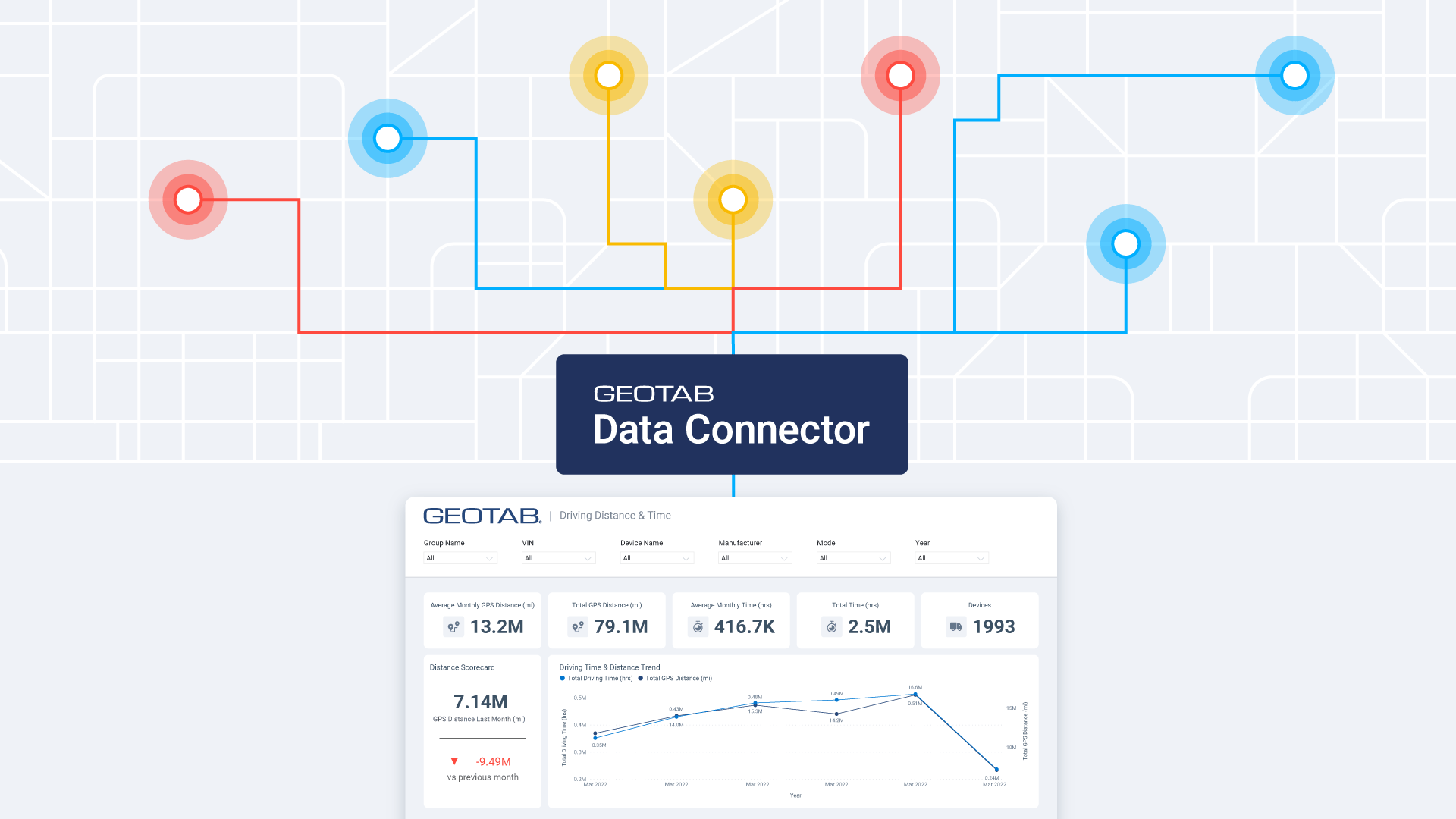Geotab recap of Google Cloud Next 2018
Neil Cawse and members of the Geotab Data & Analytics team presented at Google Cloud Next 2018. Read a quick overview and watch video.

By Mike Branch
Jul 27, 2018
Updated: Aug 21, 2024
2 minute read

San Francisco was buzzing this past week as 25,000 people descended on the city for Google Cloud Next 2018. Geotab was thrilled to be part of this tech conference, and was highlighted on Wednesday’s keynote session for its machine learning chops leveraging new AI tools publicly released this week by Google, along with eight other high-profile companies, including Bloomberg and 20th Century Fox.
Geotab has been part of Google’s early access program for BigQuery ML (BQML). At the conference, CEO Neil Cawse spoke during a spotlight session about how Geotab leverages the power of BigQuery not only for its traditional telematics business, but for new smart city solutions driven from over 1 million connected vehicles in the Geotab ecosystem.
Click below to watch the video: Rethinking Big Data Analytics with Google Cloud (Cloud Next' 18)
Not only does Geotab provide free and open access to a wealth of smart city data in our new insights portal data.geotab.com, but with the new machine learning (ML) tools built into BigQuery, this gave us the power to showcase a new software solution that predicts particularly hazardous driving areas in a city based on weather and traffic flow.
What is data.geotab.com? Here is everything you need to know about the website.
Diving Deep
We got really technical and into the weeds during the deep dive talk by Google’s Chad Jennings, Geotab Data Solutions Manager Bob Bradley and Data Scientist Daniel Lewis. The presenters walked through a technical demonstration of how the solution was put together and what this means for a smart city.
See the full presentation below: How Geotab Drives Smart City Innovation, Using BigQuery (Cloud Next '18)
Geotab focused on two use cases focused around road safety in cities:
Use Case #1: Virtual Pneumatic Tubes in NYC
By drawing a simple line on a map, Geotab leveraged its data insight from the thousands of vehicles driving around New York City to provide an immediate snapshot of speed and hazardous driving areas at a hyper-local level in a school zone.
This provides immediate access to insight that can serve as a proxy for aggregate driving behaviour without having to deploy crews to place physical pneumatic tubes to measure traffic activity over short periods of time and then subsequently analyze the data produced.
The new BigQuery GIS tools announced by Google this week made all of this possible, allowing us at Geotab to use many common
GIS functions that exist in PostGIS, but leveraging the scale of BigQuery.
Use Case #2: Using AI to Predict Hazardous Driving Areas in Chicago
In the second use case, leveraging the NOAA public dataset in BigQuery, we used a series of filters to adjust temperature, visibility, precipitation and traffic flow to predict potential hazardous driving areas in Chicago (based on areas where vehicles tend to harsh brake or experience accident-level events).
We found an interesting location that emerged near a school in the north end of Chicago where a particularly hazardous area was located on a street in close proximity to where children park their bicycles. In this specific area, the crosswalk and school zone signage was very far from the bike racks, not to mention the lack of a stop sign from an oncoming alley that connects to the street.
The analysis was made possible leveraging Google’s new BigQuery ML and is a perfect application to highlight potential at-risk areas for a city and promote data-driven decision-making. From here, a city might decide to move the bike rack area, provide more signage, or even place a stop sign in the alleyway approaching the street.
Between BigQuery ML and the new GIS tools available in BigQuery, Geotab is very excited to be collaborating with Google and these incredible technologies to help create better solutions for our customers and the community.
To learn more about the power of this collaboration and what it means to Geotab and our customers, be sure to check out this case study: Geotab: Turning data from vehicles into actionable insights.
More from this author:
Columbus Smart City Hackathon Showcases Talent, Data and Passion
Connected Cars Detect Mexico Earthquake
Geotab Data Shows Impact of Hurricane Harvey on Driving and Commercial Fleet Activity
Subscribe to get industry tips and insights

Mike Branch
As Geotab’s Vice President of Data and Analytics Mike Branch leads the development for solutions that enable insight from over 1.4 million connected vehicles and 30 billion telematics records that Geotab processes daily.
Table of Contents
Subscribe to get industry tips and insights
Related posts

Small Steps, Big Impact: The Transformative Power of AI in Field Service
June 11, 2025
2 minute read

.jpg)
Harnessing AI to Drive Innovation, Responsibility, and Human Potential at Scale
May 23, 2025
2 minute read

Smart selection guide for school bus fleet maintenance features
May 21, 2025
5 minute read

Smarter government fleet management with Geotab Data Connector
April 22, 2025
2 minute read

What is government fleet management software and how is it used?
April 10, 2025
3 minute read